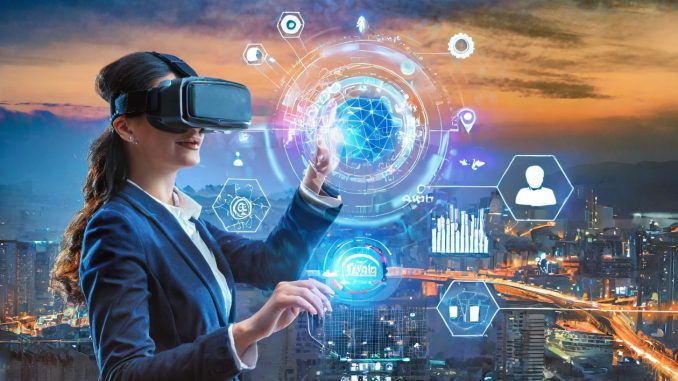
In the vast landscape of technology, few innovations have captured the imagination and potential for transformation like AR (Augmented Reality) and VR (On the two sides of the same coin are there these two immersive technologies. They are not only changing the way we entertain ourselves; they also shake up whole industries and dictate how a company deals with its customers. Industries like healthcare, education, marketing even manufacture – can feel their influence.Emerging Industry
AR and VR have come a long way from their humble beginnings. Augmented Reality, with its ability to overlay digital content onto the real world, gained early traction through applications like Pokémon Go where players could hunt for virtual creatures in any physical location using their smartphones. But another technology was also rising subtly alongside it and along the same lines: Virtual Reality. Through VR headsets such as Oculus Rift and HTC Vive, providing gamers with a level of immersion in gaming and simulation as yet completely unheard-of, users began to fall in love with an experience so complete you could hardly ask anything more.
State of the Art Entertainment
Entertainment is one of the primary domains in which AR and VR have made significant inroads. VR gaming has revolutionised the games industry by putting players into virtual worlds where they can interact with objects or characters in ways that were unimaginable- titles like Beat Saber and Half-Life: Alyx show how VR can provide immersive experiences both for storytelling as well as gameplay.
Besides, AR has brought live events and experiential Environments closer to heart, letting audiences at concerts, sports matches or plays enjoy interactive digital environmental enhancements. This composite of the existing physical chairs transformed to post-modern image make for great audience memories in one moment.
The New Normal for Businesses
In terms of retail, for instance, AR applications allow customers to visualize products in their own environment before a purchase is made. Physical showrooms thus become unnecessary and the online shopping experience is enhanced.
Education and training have benefited immensely from these technologies as well: VR provides realistic, safe environments on which to practice scenarios of any kind. Whether it’s medical professionals practicing surgery or non-medical employees undergoing safety drills VR helps greatly in learning! On the other hand, AR visually augments teaching material onto physical objects learners to interact with the material at their fingertips, in a lively and engaging manner.
New Horizons in Marketing and Advertising
With AR and VR providing advertising in revitalized form, a new manner of marketing is taking hold. For example, AR-based ad campaigns allow consumers to try on virtual clothing, see how home decor looks in their living room by means of their iphone-and even theoretically interact with products. All this not only promotes interaction between the product and its consumer but also affects whether you buy or not through providing a personally tailored, more interactive experience.
A Radical New Hope for Health Care
In healthcare, AR and VR are bringing about fresh changes in patient care, medical training and therapy. AR is a part of equipment-overlay during operations so doctors can view real-time data and images without looking away from the patient although they’re off center from their main field through VR simulations are used by medical students to practise complex surgeries in an environment which has no risk. This builds their skill level and confidence before they even set foot into an operating room.
Furthermore, the prospects for VR therapy in treating a variety of mental health conditions have been encouraging. By creating an immersive environment, therapists can expose patients to controlled stimuli and observe their response, leading to more effective therapeutic outcomes.
Challenges and Future Prospects
They are technological barrier, high cost of development, and both privacy and data security concerns. But hardware advances, software developments, consultations on regulatory problems with a whole slew of issues in each country’s unique healthcare system or market preference for local brands (depending where one lives) – all these changes are addressing the above challenges one little step at time and opening the way for more widespread use.
Future Strategic Directions for AR and VR: Look forward, these immersive technologies of tomorrow will have a beautiful view. With the arrival of 5G technology, there is no longer any obstacle to movement, as this will become seamless in everyday life. From AR glasses that overlay information onto our surroundings to VR social platforms where people can connect in virtual space with others who are far away-here, the possibilities are wide and deep.
Conclusion
Augmented Reality and Virtual Reality are not just future technologies but are also shaping the present. Beyond evolving forms of entertainment and business mediation, they represent the vanguard in technological development today. As we start to know these immersive experiences, we are journeying into a world where physical and digital boundaries are blurred, heralding an age of interaction, creativity and unlimited possibilities.